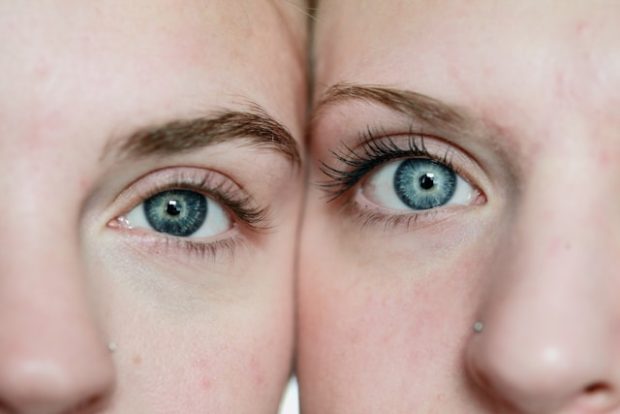When considering skin laxity treatments, it’s important to understand that multiple factors can influence the outcomes. Skin laxity, or loose skin, is typically a result of aging, but can also be caused by factors such as weight fluctuations, sun damage, and genetics. The key to achieving the best possible results from skin laxity treatment is to consider the specific aspects of your skin condition and lifestyle that may affect the treatment’s efficacy.
The success of skin tightening treatments hinges not only on the chosen procedure but also on individual characteristics such as skin type, age, and overall health. Non-invasive and non-surgical options have become increasingly popular due to their convenience and lower risk profile. Still, it’s crucial to have realistic expectations and to recognize that results can vary from person to person.
Key Takeaways
-
- Results from skin laxity treatments are influenced by individual factors and lifestyle.
- Non-invasive procedures offer benefits with a lower risk profile.
- Personal expectations should be managed as individual results can vary.
Determinants of Skin Laxity Treatment Efficacy
The success of treatments for skin laxity depends significantly on individual biological factors and lifestyle or environmental impacts. It is crucial to consider these determinants when evaluating the potential outcomes of skin improvement procedures.
Biological Factors
Age: As part of the natural aging process, your skin loses both collagen and elastin, leading to skin laxity. The fibroblast cells, responsible for synthesizing the extracellular matrix and collagen, also diminish in function over time, contributing to skin aging. Genetics can influence how quickly these changes occur and can vary significantly between individuals.
Intrinsic Aging: Apart from the inevitable age progression, intrinsic factors like genetic composition also play a role. Your skin’s capacity to rebound from laxity is partly encoded in your DNA, which can dictate how your skin responds to aging.
Lifestyle and Environmental Impact
Sun Exposure and Smoking: Sunscreen application is vital because sun exposure can accelerate collagen breakdown, and smoking further exacerbates skin aging by increasing the formation of free radicals. Protecting yourself from UV radiation and avoiding tobacco can significantly improve your skin’s health and response to skin laxity treatments.
Diet and Stress: A diet rich in antioxidants can help fight the free radicals that damage skin cells, while chronic stress can weaken the skin’s regenerative ability. Making positive lifestyle choices, including a balanced diet and stress management, may enhance the efficacy of treatments for skin laxity like radiofrequency or ultrasound.
Pollutants and Poor Lifestyle Choices: The skin’s exposure to pollutants and poor diet choices can directly impact its laxity and overall health. To get the most out of any cosmetic dermatology treatments, integrating a healthy lifestyle with mitigating environmental stresses is crucial.
Opting for skin laxity treatment, whether through minimally invasive procedures like radiofrequency or more intensive surgical procedures such as a facelift, involves collaboration with a dermatologist or plastic surgeon. These professionals can help evaluate how these factors may affect the success of your treatment, ensuring you are informed and prepared for your skin care journey.
Treatment Modalities and Patient-Specific Considerations
When considering skin laxity treatments, it is imperative to understand that various modalities can be employed to improve skin appearance, and the choice largely depends on individual needs and desired outcomes. Your skin’s condition, the body area you want to treat, and the specific concerns, such as jowls or sagging, are crucial in determining the appropriate course of action.
Non-Surgical Techniques
Skin Rejuvenation: Non-surgical techniques for skin laxity primarily aim at skin rejuvenation by enhancing collagen production and skin elasticity. Treatments like microneedling create controlled micro-injuries in the dermis, stimulating natural repair processes, while Thermage and Ultherapy harness radiofrequency and ultrasound energy respectively to heat the deeper layers of skin and encourage tightening.
-
- Skincare Products: Consistently using skincare products formulated to support collagen production and skin hydration can improve the skin’s appearance and are often recommended in conjunction with other treatments.
- Light Therapy and Laser Treatments: Options like fractional resurfacing, laser skin resurfacing, and LED light therapy work by promoting new skin growth and can be effective for treating minor skin laxity on facial skin.
- Radiofrequency Treatments: Technologies such as Morpheus and skin tightening treatments like SkinTyte use radiofrequency to target connective tissue, promoting skin elasticity and firmness without surgery.
Surgical Alternatives
-
- Aesthetic Procedures: In cases of significant skin laxity, especially after significant weight loss or due to the effects of gravity, surgical alternatives may be recommended. Procedures such as facelift, neck lift, or tummy tuck remove excess skin and tighten underlying connective tissue, offering more dramatic and long-lasting results compared to non-surgical methods.
- Cosmetic Surgery: Surgical treatments, being more invasive, require a detailed evaluation of your health and goals. Deciding on cosmetic surgery often involves considering both the potential for pronounced improvements and the associated recovery time.
- Dermatologic Surgery: Less invasive surgical options such as Silhouette InstaLift provide a middle ground, lifting and repositioning facial skin with minimal downtime. The use of botox and dermal fillers also falls under this category, addressing skin laxity and volume loss with temporary but immediate effects.
Your unique physical characteristics, lifestyle, and the condition of your skin all play crucial roles in selecting the most appropriate treatment to address skin laxity. Whether you opt for non-surgical methods or surgical procedures, it is essential to have realistic expectations and to consult with a professional who has extensive experience in dermatologic or aesthetic procedures.
Conclusion
Clinical assessment is crucial in determining the effectiveness of skin laxity treatments. By understanding the intrinsic and extrinsic factors that affect skin health, such as genetics, lifestyle choices, and environmental factors, you can better navigate the various treatment options. Combining treatments, including surgical methods and non-surgical modalities, may lead to more significant improvements in skin texture and firmness. Regular follow-up and evaluation of skin quality will help you maintain optimal results over time.
Read More:


